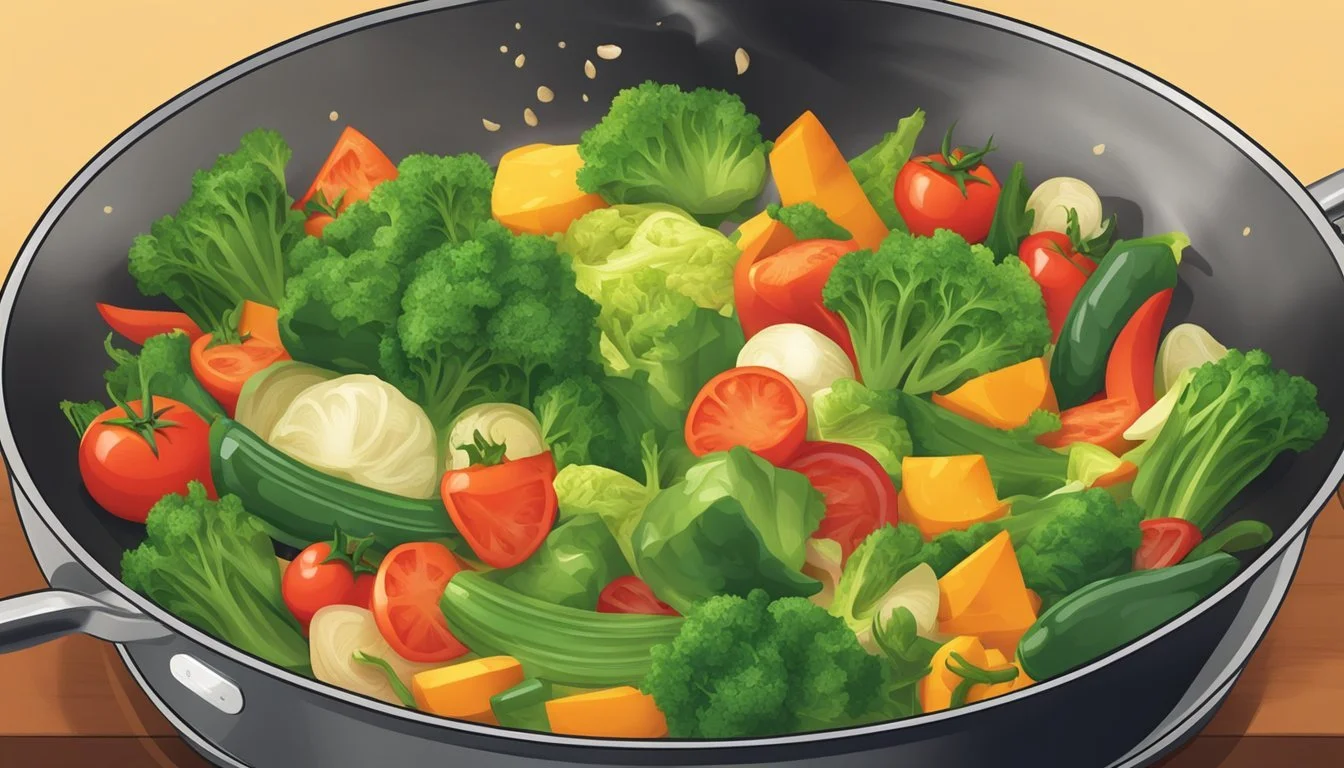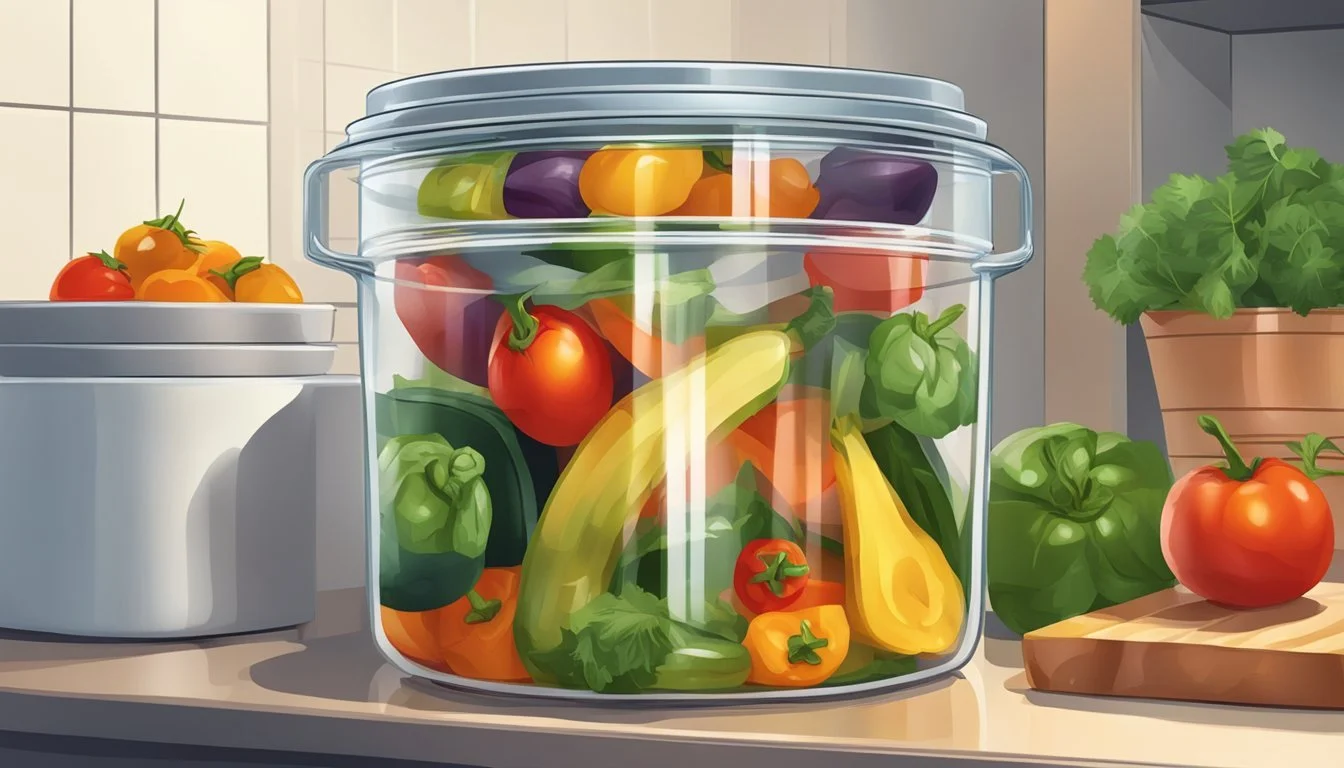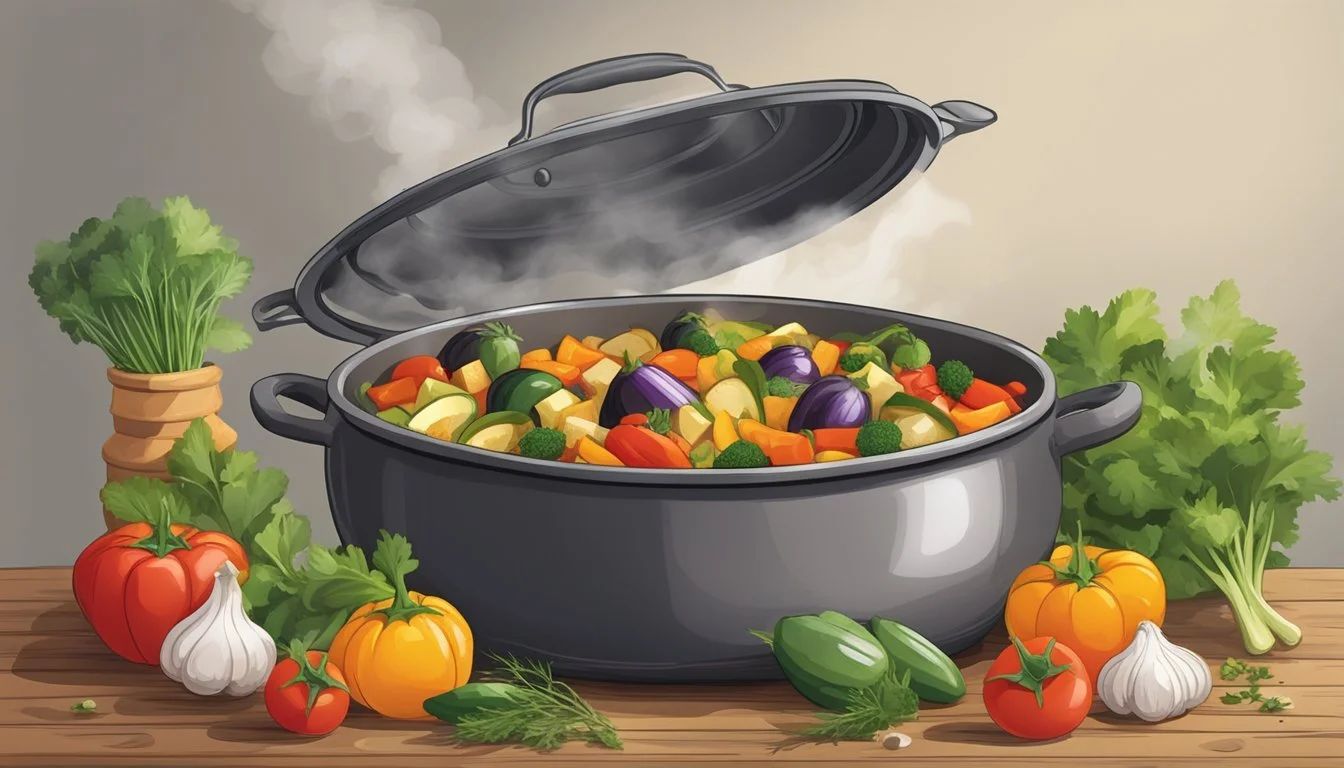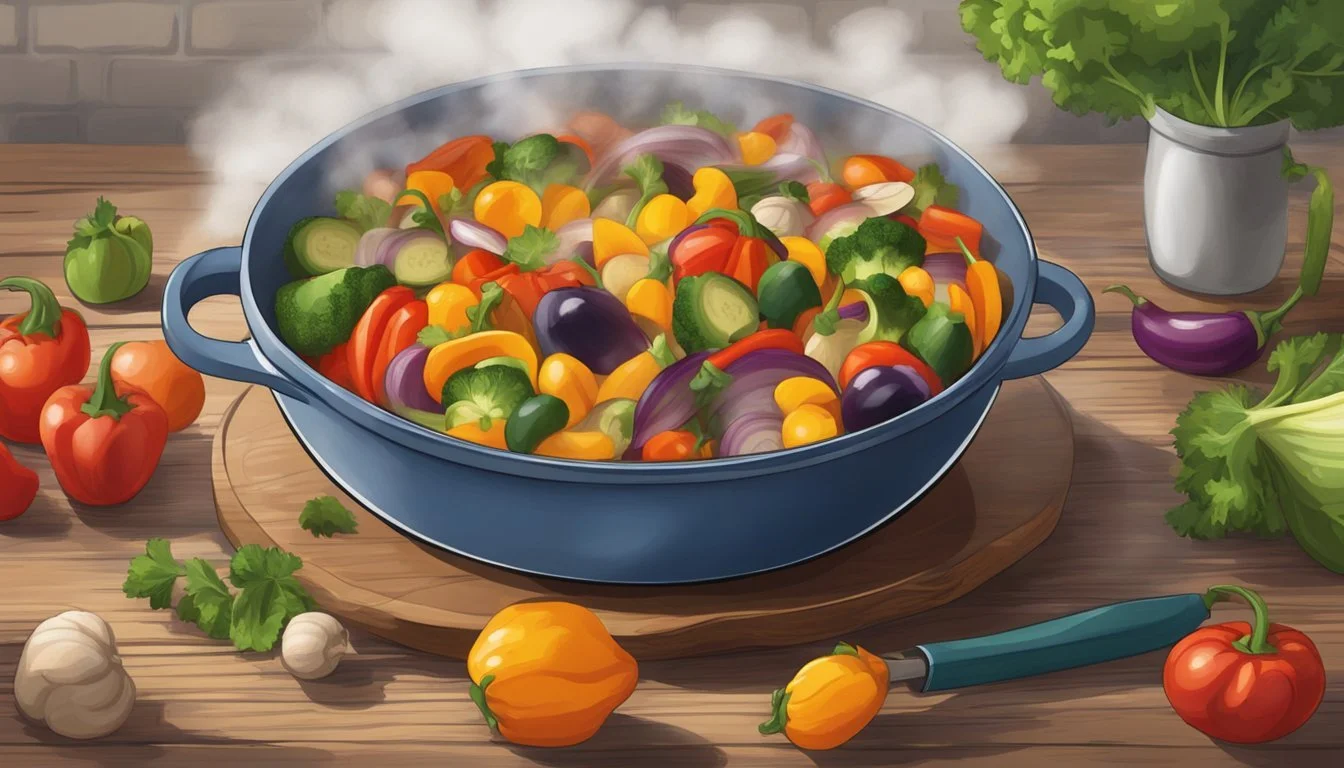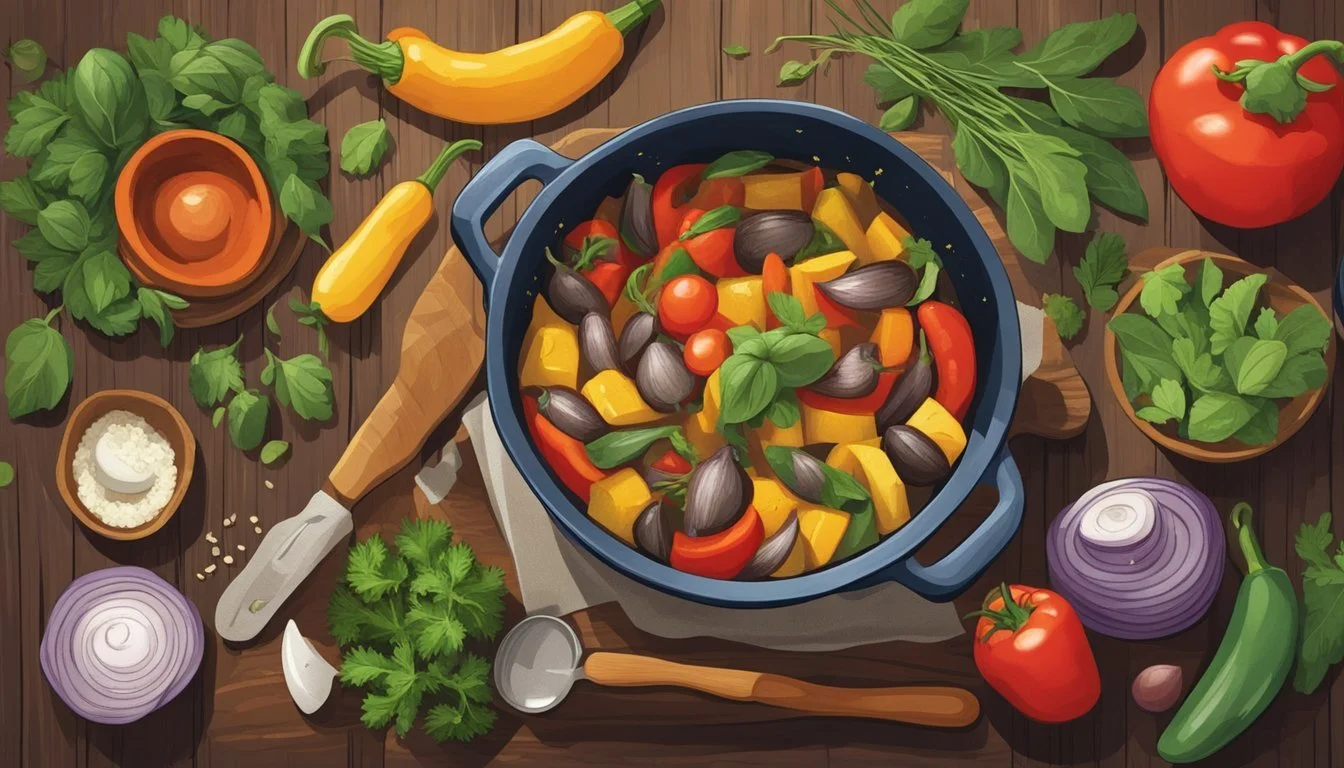How Long Does Freshly Prepared Ratatouille Last?
Ratatouille (What wine goes well with ratatouille?) is a traditional French stewed vegetable dish renowned for its vibrant flavors and healthful ingredients. Originating from Nice, this quintessential Provençal dish embodies the essence of Mediterranean cuisine with its mix of eggplant (What wine goes well with eggplant?), zucchini (What wine goes well with zucchini?), tomatoes, bell peppers, onions, and an assortment of herbs. Each ingredient is meticulously sautéed separately before being layered and cooked together, allowing the individual flavors to meld and intensify. The result is a hearty, versatile dish that can serve as a main course, a side dish, or even a delicious filling for other recipes.
Properly stored, freshly made ratatouille maintains its quality for up to 4 to 5 days when refrigerated in an airtight container. The flavors of the dish continue to develop as it sits, often resulting in an even more delightful taste experience the following day. Those looking to extend its shelf life can also opt to freeze ratatouille, a method that preserves texture and flavor effectively for longer-term storage. Care must be taken to cool the dish to room temperature before sealing it in freezer-safe containers, ensuring that its rich tapestry of flavors is preserved as intended.
Understanding Ratatouille
Ratatouille is a vibrant vegetable stew originating from Provence, a region in the South of France. It is celebrated for its medley of vegetables, herb-infused flavor profile, and versatility in dietary preferences like vegetarian and vegan lifestyles.
Historical Background
Ratatouille has its roots in the region of Provence and saw its beginnings as a humble peasant dish. It was a practical way to use up an abundance of seasonal vegetables. Over time, it became a beloved staple of French cuisine, epitomizing the use of fresh produce to create a hearty meal.
Key Ingredients
The classic ratatouille recipe calls for staple vegetables like:
Eggplant (What wine goes well with eggplant?): lending a creamy texture when cooked,
Zucchini: providing a subtle, earthy flavor,
Tomatoes: which add acidity and body to the stew,
Bell peppers: for a sweet and vibrant taste,
Onions and Garlic: foundational for building the aromatic base,
Olive oil: for cooking and imparting a rich Mediterranean flavor, and
Select herbs such as thyme, basil, or rosemary, which infuse the dish with herbaceous notes.
Health Benefits
Ratatouille is not only a feast for the eyes but also packed with nutrition. It is:
Low in calories,
High in fiber, which aids in digestion,
Contains vitamins from the variety of vegetables, and
Can contribute to a heart-healthy diet with its good amounts of protein and low saturated fat content.
Culinary Variations
While the traditional stew is deeply rooted in Provence, variations exist:
Chunky style, where vegetables are cut into large pieces,
Confit byaldi, a modern interpretation with thinly sliced vegetables,
Ratatouille can be adapted to include meat such as chicken, fish, or beef for a more substantial main course.
Serving Recommendations
Traditionally, ratatouille can be served as a:
Main course or as a side dish,
Complements bread, salad, or starchy foods like rice or pasta,
It can be paired with various proteins like fish or chicken to create a fuller meal.
Common Ratatouille Questions
How long does ratatouille last? Freshly made, it can stay in the refrigerator for 3-5 days when stored properly in an airtight container.
Can it be made ahead of time? Yes, the flavors often develop and improve when allowed to rest.
Is ratatouille gluten-free? Absolutely, the stew is made predominantly of vegetables and is naturally gluten-free.
Preparing Ratatouille
Preparing ratatouille involves a careful selection of summer vegetables and herbs, combined with specific cooking techniques to achieve a rich, flavorful dish. Adherence to traditional recipe instructions ensures the classic taste ratatouille is known for.
Selecting Ingredients
One starts with fresh, high-quality ingredients, forming the basis of the flavor profile for traditional ratatouille. This includes:
Summer vegetables: eggplants, zucchini, and bell peppers.
Herbs: fresh basil, thyme, and parsley.
Others: ripe tomatoes, onions, garlic, salt, and pepper.
Ingredients should be fresh, as this dish celebrates the flavors of each vegetable.
Cooking Techniques
Ratatouille's rich flavor develops through a combination of different cooking techniques:
Sautéing: Onions and garlic are usually sautéed until translucent to form a flavorful base.
Simmering: Tomatoes are simmered to create a rich tomato sauce.
Roasting or Sautéing Vegetables: Peppers, eggplants, and zucchini can either be roasted in an oven to intensify their flavors or sautéed in a Dutch oven.
Each technique is designed to respect the individual character of the ingredients while building a harmonious blend of flavors.
Recipe Instructions
The preparation of ratatouille is a methodical process:
Prepare the Base:
Sauté onions and garlic.
Stir in tomatoes and simmer to form a sauce.
Prepare the Vegetables:
Slice the eggplants, zucchini, and peppers uniformly.
Option 1: Sauté each vegetable separately in a Dutch oven and then layer them.
Option 2: Arrange sliced vegetables over the tomato sauce and bake in the oven.
Combine and Cook:
If using an oven, cover with foil and bake, then uncover and continue baking until vegetables are tender.
If cooking stovetop, layer the sautéed vegetables, cover, and cook over low heat.
Following these instructions is essential to achieve ratatouille's characteristic blend of flavors and textures.
Storing Ratatouille
Ratatouille, a delightful vegetable stew, can maintain its quality and flavor through proper storage. Whether for short-term enjoyment or extended preservation, understanding the optimal conditions for refrigeration and freezing is crucial.
Short-Term Storage
For those anticipating enjoying their ratatouille within a few days, refrigeration is the best method. Leftovers should be cooled to room temperature and placed in an airtight container. It is important to:
Seal tightly with a lid or cover with foil to prevent moisture and other contaminants.
Refrigerate promptly; ratatouille can be stored for 3-5 days while retaining its texture and taste.
Freezing and Long-Term Storage
When preserving ratatouille for a future meal, freezing offers a long-term solution:
Cool the ratatouille before transferring it to a freezer-safe container or bag.
Ensure it is sealable to prevent freezer burn and to retain the stew's quality.
Label with the date of freezing; ratatouille can be safely frozen for up to 3 months.
Reheating Tips
When ready to enjoy a reheated ratatouille, there are methods to ensure it comes out hot and delicious:
Thaw overnight in the refrigerator if frozen.
For a hot dinner, reheat in an oven at a moderate temperature, typically for 10-15 minutes, until thoroughly warmed.
Alternatively, reheat in a microwave or stovetop, stirring occasionally to promote even heating.
By following these storage and reheating guidelines, one can ensure their ratatouille retains its flavor and quality, whether it's enjoyed as a leftover or as a prepared meal taken out from cold storage.
Optimizing Ratatouille Quality
When making ratatouille, the longevity and taste of the dish hinge on how one balances flavors, masters the texture, and applies enhancement techniques. Reflecting this, the goal is to create a dish that not only tastes great upon completion but also maintains its quality over time.
Balancing Flavors
The succulence of ratatouille lies in the harmony of flavors. To achieve this, chefs recommend:
Salt and Pepper: Incorporate sea salt and freshly ground black pepper judiciously to elevate the natural taste of the vegetables.
Herbs: A blend of fresh herbs such as rosemary and thyme adds complexity. One can also integrate dried oregano for depth, while a pinch of red pepper flakes introduces a gentle heat.
Balancing these seasonings ensures each ingredient can sing without overpowering the chorus.
Perfecting Texture
Ratatouille's texture is as crucial as its taste, where vegetables should be tender but not mushy:
Vegetable Prep: Vegetables should be evenly cut to ensure consistent cooking.
Cooking Process: To avoid overcooking, sauté vegetables like eggplant and zucchini separately until just browned before combining with the stewed elements.
By preventing overcooking, each vegetable retains some of its structure, offering a pleasing mouthfeel.
Enhancement Techniques
Quality extends beyond initial preparation, considering storage and reheating:
Olive Oil: Using a generous amount of olive oil helps in preventing the vegetables from drying out and maintains the lushness of the dish.
Storage: For best results, cool the ratatouille first, then store in an airtight container in the refrigerator for 1-2 days, enhancing the intermingling of flavors.
In applying these techniques, one safeguards the ratatouille's integrity for enjoyable consumption days after preparation.
Ratatouille Pairings
Ratatouille is a versatile vegetable stew that can be paired with a variety of dishes, beverages, and alternatives suited for different dietary needs. The rich flavors of ratatouille are complemented well by both simple and complex pairings.
Complementary Dishes
Main Course Options:
To create a satisfying meal, pair ratatouille with a protein such as roasted chicken (What wine goes well with roasted chicken?) or grilled fish. For vegetarian recipes, serve it as a main course with grains like rice or quinoa.
Gluten-Free and Vegan Options:
Rice: A side of fluffy rice makes for a gluten-free pairing that also suits vegan diets.
Potatoes: Roasted or mashed potatoes offer a comforting addition without gluten.
Beverage Pairings
Wine:
A light red or a full-bodied white wine balances the flavors of the ratatouille without overpowering the dish. Pinot Noir and Chardonnay are common choices.
Non-Alcoholic Options:
Sparkling water with a squeeze of lemon or a non-alcoholic herb-infused mocktail can refresh the palate between bites of this hearty stew.
Alternatives for Dietary Restrictions
Gluten-Free Adaptations:
For those avoiding gluten, rice or gluten-free pasta are excellent choices to soak up the ratatouille's sauce without worry.
Dairy-Free and Vegan:
Opt to sprinkle nutritional yeast or vegan cheese substitutes atop the dish to mimic the savory flavor of cheese, maintaining a vegan profile.
Bread as a Side:
Serve gluten-free bread to dip into the ratatouille as a simple yet satisfying option for those with gluten intolerance.
FAQs About Ratatouille
This section covers essential FAQs regarding ratatouille, focusing on common queries during preparation, best practices for storage, and ideal serving recommendations.
Common Preparation Questions
When creating ratatouille, chefs often use a variety of vegetables, including yellow squash, summer squash, onion, red bell pepper, and Roma tomatoes. Each vegetable should be cut uniformly to ensure even cooking. To enhance the flavors, vegetables are typically sautéed until tender, then stewed together in a sauce, traditionally with herbs like basil and thyme.
How to make ratatouille:
Sauté onions (white, yellow, or red) and bell peppers (red or yellow) until fragrant.
Add diced eggplants, zucchini (yellow squash or summer squash), and peeled Roma tomatoes.
Stew the mixture until the vegetables are tender and the flavors meld in a rich, savory sauce.
Storage Concerns
Ratatouille is both nutritious and convenient, as leftovers can be easily stored and repurposed for future meals.
To refrigerate ratatouille:
Allow the dish to cool to room temperature.
Place the ratatouille in an airtight container.
It will last in the refrigerator for 4-5 days.
To freeze ratatouille:
Store in freezer-safe containers or bags.
Properly stored, ratatouille can last for up to 3 months.
Thaw in the refrigerator overnight before reheating.
Serving Suggestions
Ratatouille is a versatile dish that can be served in various ways, making it a perfect fit for either lunch or dinner.
To serve ratatouille:
Warm gently over medium heat if previously stored.
Serve alongside or atop crusty bread, as the bread will soak up the flavorful juices.
Pair with a simple salad for a light and balanced meal.
Ratatouille can also be enjoyed cold, making it a refreshing option during warmer months.
Conclusion
Ratatouille, a traditional French dish characterized by its vibrant assortment of vegetables, can be enjoyed freshly made or preserved for later consumption. Proper storage is key to maintaining its quality.
Refrigeration: When kept in an airtight container, ratatouille stays fresh for approximately 3-5 days. The flavors may even enhance over this period, as the ingredients continue to meld.
Freezing: For longer storage, freezing is an effective option. Ratatouille can be frozen for up to 3 months. The texture and taste post-thawing greatly depend on the initial cooking process. Vegetables should be cooked properly but not overdone to avoid a mushy texture after thawing.
Ratatouille Preparation Tips:
Cooking: Aim for vegetables that retain some bite to fare better during freezing and reheating.
Cooling: Before refrigerating or freezing, let the ratatouille cool to room temperature.
Containers: Use airtight containers or freezer bags to minimize air exposure.
Reheating: Whether it's been refrigerated or thawed after freezing, the dish is best reheated slowly over low heat on the stovetop or in an oven until heated through. Microwaving is quicker but may unevenly warm the dish.
In conclusion, the traditional practice of cooking and baking ratatouille results in a versatile dish that can be enjoyed immediately or stored for later. By adhering to these storage guidelines, ratatouille's quality and flavors can be preserved, allowing one to savor this French classic at their convenience.



